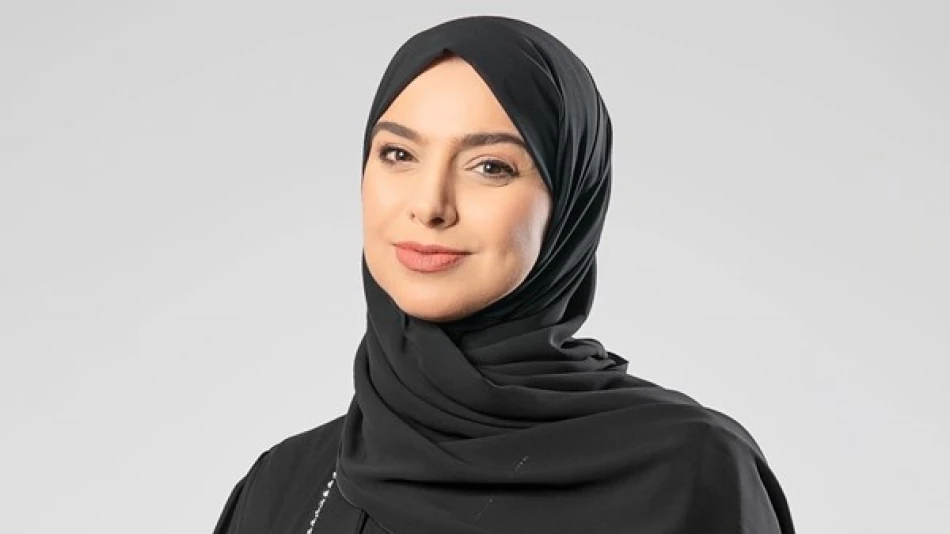
Empowering Youth: The Heart of the UAE's Developmental Journey with Amna Al-Dhahak
UAE Doubles Down on Youth as Climate Champions in Strategic Sustainability Push
The United Arab Emirates is positioning its young population as the cornerstone of its ambitious sustainability agenda, with Climate Change and Environment Minister Dr. Amna bint Abdullah Al Dahak declaring youth empowerment a "strategic investment" for achieving global development goals. This approach reflects the Gulf nation's broader strategy to maintain its competitive edge in the green economy transition while diversifying away from oil dependence.
From Oil Economy to Knowledge Hub: The Youth-Driven Transformation
Speaking on International Youth Day, Minister Al Dahak emphasized that the UAE views young people not merely as "future leaders" but as active partners in shaping the country's present and future. This philosophy traces back to the nation's founding father, Sheikh Zayed bin Sultan Al Nahyan, whose vision established education and human capital development as pillars of national strategy.
The minister's remarks align with this year's International Youth Day theme: "Local Youth Action for Achieving Sustainable Development Goals and Beyond." For the UAE, this represents more than ceremonial support—it's a calculated bet on youth-led innovation to drive economic diversification and climate leadership.
The "Mustadeem" Program: Training Tomorrow's Green Workforce
The ministry's flagship "Mustadeem" (Sustainable) program exemplifies this approach, having successfully completed its first phase. The initiative provides practical training in sustainable agriculture and environmental protection, creating a pipeline of scientists, innovators, and entrepreneurs equipped to tackle future challenges.
This hands-on approach distinguishes the UAE's youth strategy from more theoretical programs elsewhere. Rather than simply promoting awareness, the country is building technical expertise in sectors where it aims to become a global hub—renewable energy, sustainable agriculture, and environmental technology.
Strategic Positioning in the Global Green Race
The UAE's emphasis on youth-driven sustainability comes as Gulf nations compete to establish themselves as post-oil economic powerhouses. While Saudi Arabia focuses on megaprojects like NEOM, and Qatar leverages its World Cup infrastructure investments, the UAE is betting on human capital and innovation ecosystems.
This strategy mirrors successful models in Singapore and South Korea, where government-backed youth development programs helped transform resource-poor nations into technology leaders. The UAE's advantage lies in combining substantial financial resources with a young, educated population increasingly focused on sustainability challenges.
Market Implications and Investment Opportunities
For investors and businesses, the UAE's youth-focused sustainability push signals several trends. The government's commitment to training programs suggests a growing skilled workforce in green technologies, potentially attracting international companies seeking regional operations bases. The emphasis on entrepreneurship also indicates expanding opportunities in cleantech startups and sustainable business models.
Moreover, the alignment between local action and global goals positions UAE-based initiatives to access international climate financing and partnerships. This could prove particularly valuable as global ESG investment continues growing, with sustainability-focused funds seeking credible regional partners.
Beyond Rhetoric: Measuring Real Impact
The true test of the UAE's youth sustainability strategy will be measurable outcomes—job creation in green sectors, successful startups emerging from government programs, and tangible environmental improvements. Early indicators from the Mustadeem program suggest promise, but scaling these initiatives nationwide while maintaining quality will prove challenging.
The minister's direct appeal to young Emiratis—emphasizing that "every innovative idea you launch, every small project you start in your community" contributes to global development goals—reflects confidence in grassroots innovation. Whether this bottom-up approach can complement the UAE's traditional top-down development model remains an intriguing experiment in governance and economic strategy.
Most Viewed News

 Layla Al Mansoori
Layla Al Mansoori






